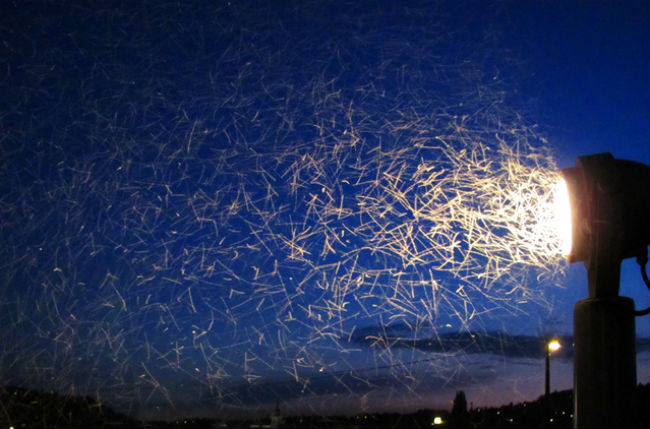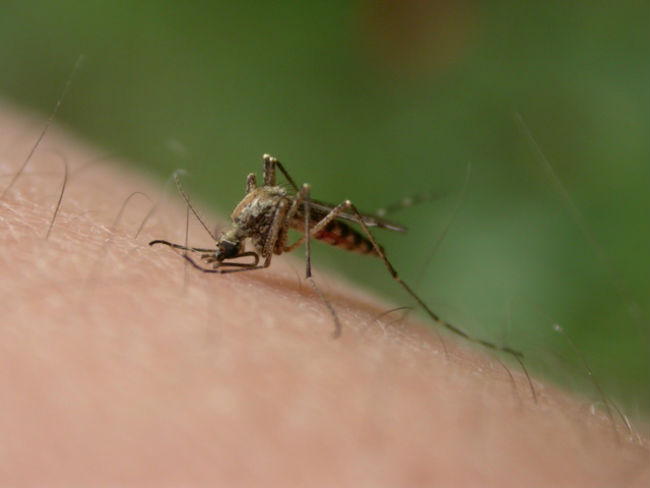Mosquitoes of family Culicidae live worldwide and annoy humans and animals during their “mosquito seasons”. We are going to talk about the most intresting mosquito facts that are connected with positive and negative sides of these flying insects’ lifespan. Moreover, you will learn about differences between mosquito species, their behavior when feeding, if they have teeth, what attracts them and what diseases mosquitoes may cause.
General mosquito facts
Fact №1. Not all species of mosquitoes are blood-sucking.
Fact №2. Only mosquito females of blood-feeding species can consume blood of invertebrates. Moreover, they suck flower nectar the same as male mosquitoes do. However, after mating, female mosquitoes start seeking for a source of a blood meal full of high quality protein. It is required for ovification and vitally important for oviposition.

Fact №3. Mosquitoes do not have teeth. They “bite” skin only with the help of their piercers or proboscis. The tube-like mouth parts of mosquitoes are similar to injection needles.
Fact №4. Mosquito females live twice as long than mosquito males.
Fact №5. Female mosquitoes need to mate only once. They store sperm for the next ovifications during their whole lifespan.
Mosquito lifecycle: oviposition and hibernation
Fact №6. Mosquito females lay about 50 – 450 eggs per one oviposition into standing water. They are able to produce from 2 to 5-7 generations per one mosquito season, if the ambient conditions of temperature and humidity are sufficient. Three stages of mosquito life cycle (egg, larval, pupal) are aquatic.

Fact №7. Eggs of genus Aedes and fertile females of genera Anopheles and Culex are able to hibernate and withstand low and freezing ambient temperatures. When the ambient temprature rises, the hibernated eggs hatch out and the fertile mosquito females fly out, suck in blood to produce and lay eggs.
Why are mosquitoes refered to the deadliest insects for humans?
Fact №8. As it was already mentioned above in general mosquito facts, mosquito females seek for a blood meal to produce and lay eggs. In fact, they take blood from a human or animal in small quantity. However, their saliva left in skin can be highly irritating. It causes a dermal irritation well-known as mosquito bite allergy, that results in inflammatory process and intense itching. It takes time and money to cure mosquito bite swelling and skin irritation.
Fact №9. Some spieces of mosquitoes, on the other hand, are also carriers of parasites and diseases from one organism to others. They act as a mechanical bridge between infected hosts and healthy ones. Only several mosquito species, including genera of Aedes, Anopheles and Culex, are able to spread extremely harmful, even mortiferous, viruses among humans. Mosquito bite diseases are West Nile virus, Chikungunya, Yellow fever, Malaria, Dengue fever, Zika virus, filariasis and others.
Fact №10. Mosquitoes of genus of Aedes transfer yellow fever, dengue, Zika virus, chikungunya, human lymphatic filariasis, japanese encephalitis. They have noticeable black and white markings on their body and legs.
Fact №11. Diseases caused by Culex mosquitoes include West Nile fever, avian malaria, western equine encephalitis, St Louis encephalitis, japanese encephalitis, filariasis.
Fact №12. Malaria mosquitoes also known as mosquitoes of Anopheline genus transmit Malaria fever.
Fact №13. Blood-sucking mosquitoes do not transmit HIV.
Differences between species of mosquitoes

Fact №14. Mosquito females of genera Aedes and Culex keep their bodies horizontal when feeding. Mosquitoes of Anopheles tend to sit with their heads low and their rear ends raised high when blood-eating.
Fact №15. Only mosquitoes of genus of Aedes are active and bite during the daytime.
What are mosquitoes good for?
One may think, if mosquitoes are deadly harmful to people, why not to exterminate them all around the world. Truly speaking, they annoy only humans and animals. Here are some mosquito facts about the real benefit from these blood-feeding insects.
Fact №16. If we get rid of mosquitoes, we will break a food chain and distort the natural balance.
Fact №17. Birds, spiders, frogs, fish are natural consumers of mosquitoes. Bats and mosquito eating birds, such as swifts, are the best exterminators among adult mosquito predators. Bottom-dwelling mosquito larva is a source of food for fish.
Fact №18. Aquatic mosquito forms filter and purify water in ponds and lakes from microorganisms.
Fact №19. When mosquitoes die, they fertilize the soil with organic compounds.
Fact №20. Some people suppose that mosquitoes clean our energy channels. They bite only those, whose body is slaggy. They are attracted to the warmth, odor and movement. Compounds of lactic acid in human sweat and smell, produced by bacteria, on human skin are magnetic to mosquitoes.
To sum up, these 20 mosquito facts have proved the importance of mosquito life activity for balance in nature on the one hand, and the potential risk of getting virus caused by mosquito bite on the other. The only way to “make friends” with these blood-sucking insects is to keep their population under control in and near the houses. It prevents mosquito harborage and reduces their contact with people and animals.
thankyou for this article, helped me a lot
This article is really helpful